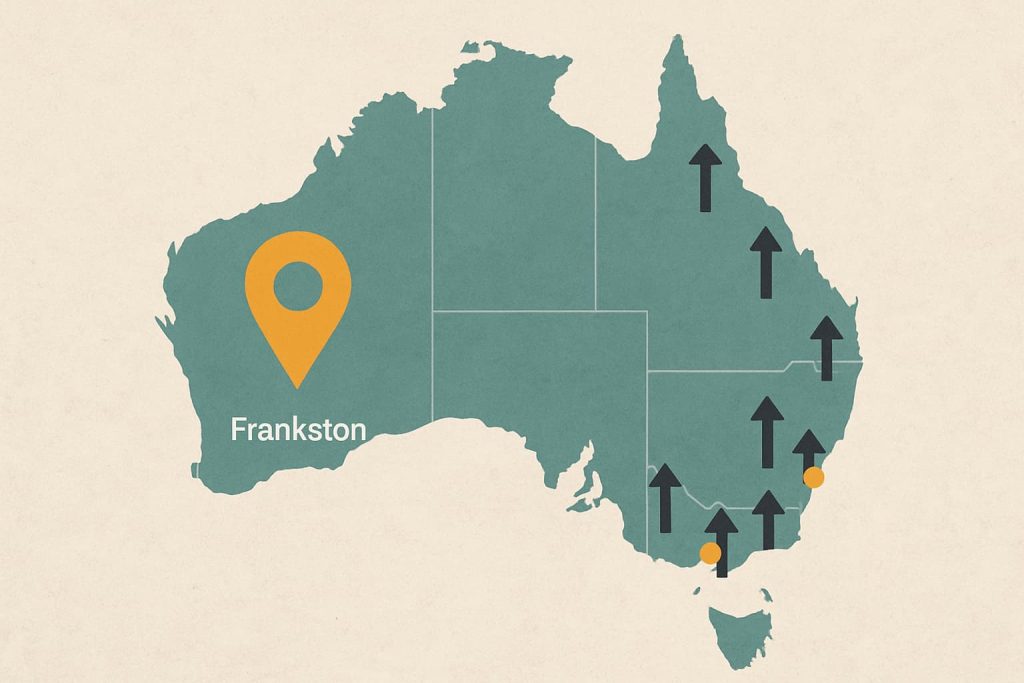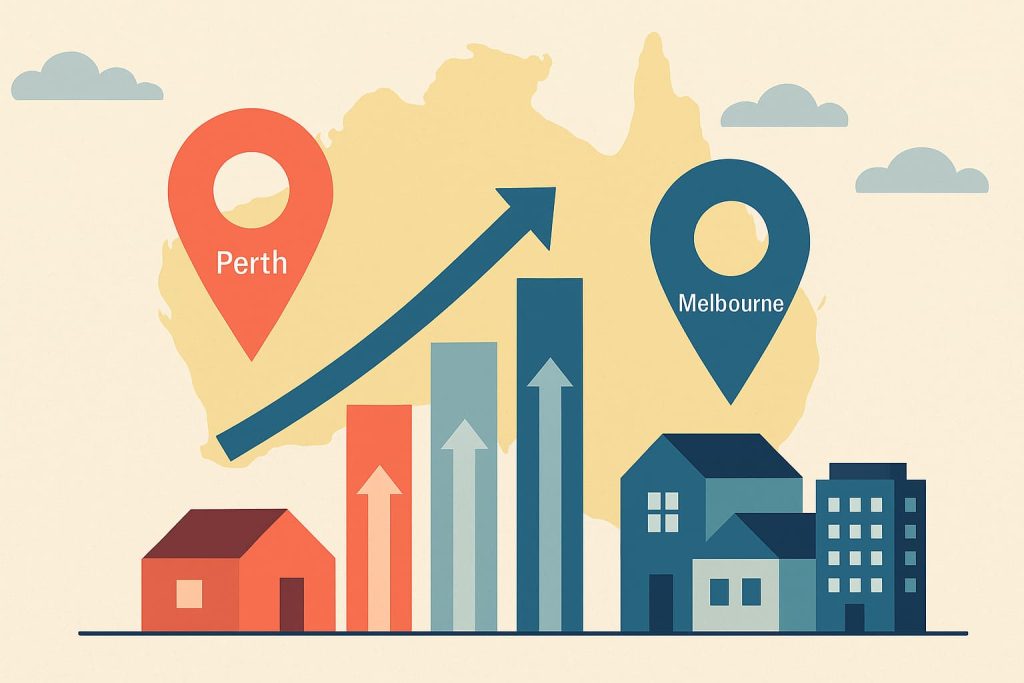Melbourne houses have bottomed out in price according to major property analysts, with post-pandemic migration underpinning the recovery.
The property market in our capital city hit its low point in early March and has since then risen by 0.7 per cent.
It’s a similar story in Sydney, where prices bottomed out a touch earlier, in early February, but they have bounced back even more, rising by a solid two per cent since then.
CoreLogic figures have national house prices falling by 9.4 per cent peak-to-trough, which comes in lower than most economists predicted they would.
Challenger chief economist Jonathan Kearns spoke to the Australian Financial Review about immigration driving the better-than-expected results.
“Immigration is going to be stronger than developers anticipated some 12 to 24 months prior, and we saw in the 2000s how unexpected immigration can be a fillip to prices,” he said.
“Other factors were at play then also, and in the pandemic unexpected lack of immigration was more than offset by declining household size and general demand for more housing.”
Major property analyst players CoreLogic, SQM Research and RBC Capital Markets are all happy to declare the downturn over in Melbourne off the back of increasing housing indicators.
“As more data flows have come through across housing finance, consumer sentiment, vendor discounting and sales volumes, it seems the national housing market downswing may have bottomed out in early March,” CoreLogic’s head of research Eliza Owen told AFR.
“A record return in overseas migration was unexpected, and it has left housing demand far outstripping supply, which has contributed to the start of a more sustained upswing in value.”
SQM Research managing director Louis Christopher said the auction market was on the improve and vendors were lifting their asking prices accordingly.
“I believe the worst is over for the Sydney and Melbourne markets,” he told AFR.
“We’re confident that the housing market would recover from here provided the cash rate peaks below 4 per cent, which looks like it would.
“We’ve still got inflation out there and housing historically has been a good hedge against inflation.
“We’ve also got record population growth, so we’re seeing a surge in underlying demand for accommodation, and it’s showing up clearly in the rental market. But that also feeds through into the sales market as well because many new arrivals don’t want to rent. That’s why we’re increasingly confident of housing market recovery in 2023.”
It comes as the International Monetary Fund this week mentioned Australia as one of the world’s six advanced economies with the worst level of housing risk.
“Housing markets and prices are likely to cool more and be more sensitive to policy rate hikes in economies in which house prices rose more during the pandemic,” the IMF said in their latest World Economic Outlook.
“Economies with high levels of household debt and a large share of debt issued at floating rates are more exposed to higher mortgage payments, with a greater risk of experiencing a wave of defaults.”
Domain chief of research and economics Nicola Powell was one economist who baulked at calling the bottom of the price cycle.
“The pause in rate rises obviously helped improve sentiment and the record levels of immigration will have a positive impact on rents and sales,” she said.
“I feel a bit more optimistic now that the fixed rate cliff will not be as severe as previously expected, considering that most homeowners seemed to have already adjusted to higher rates.”



